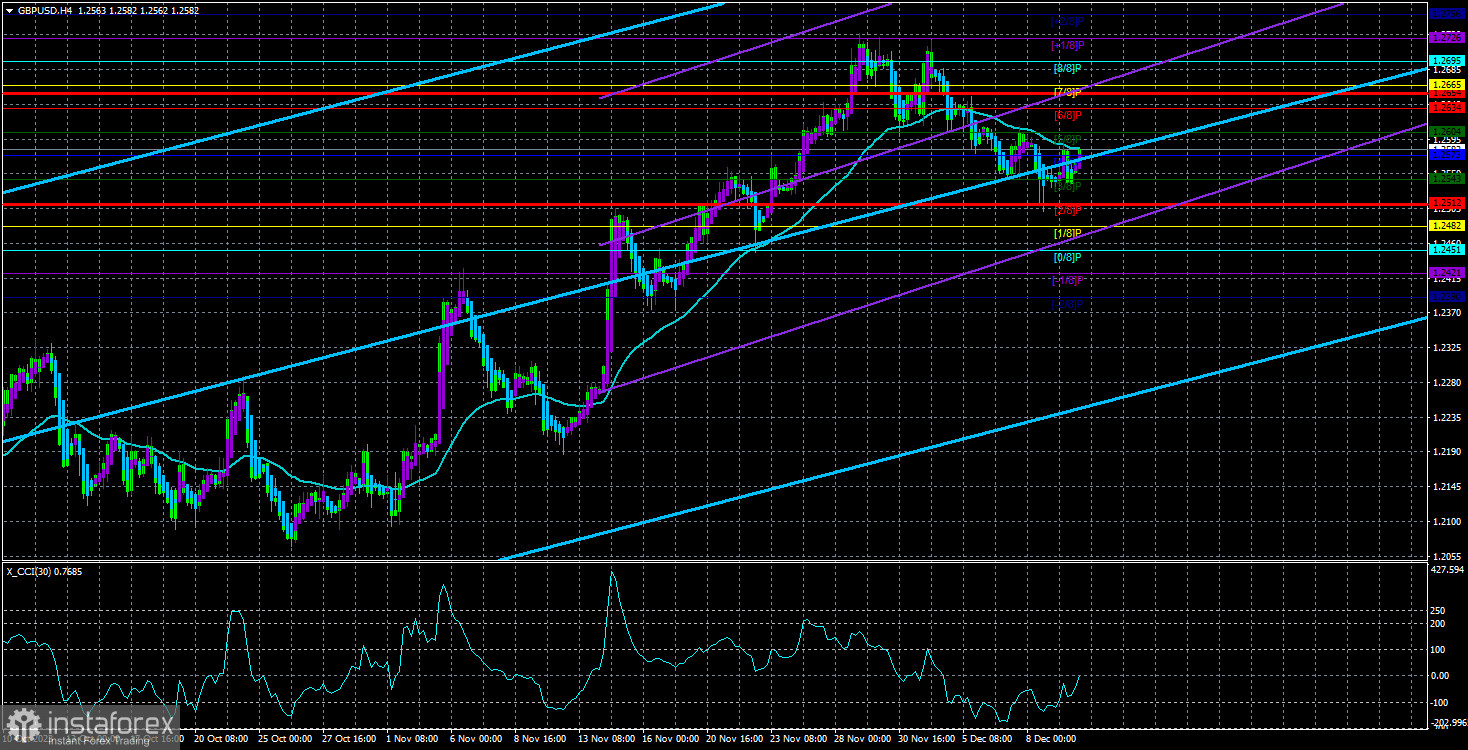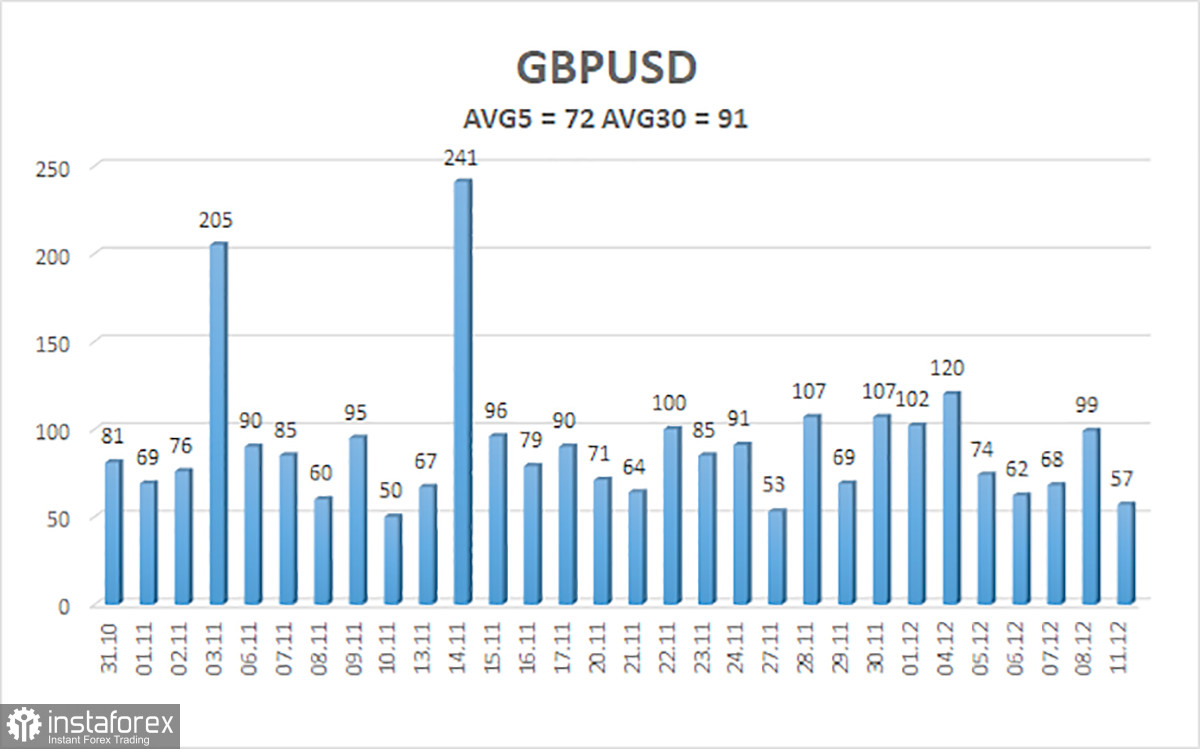
The GBP/USD currency pair slightly increased on Monday, although there were no grounds for it. The EUR/USD pair stood still throughout the day, which is quite reasonable since there were no fundamentals or macroeconomics on Monday. However, the pound once again found reasons to rise, even though there were none. Of course, a 30-point increase should not be exaggerated. We just want to draw attention to the fact that the pound often rises without any apparent reason and falls much less than it should. Despite the pair declining for over a week, it has fallen very weakly. While it is possible to conclude the start of a new downtrend based on the euro, the movement down for the pound looks like a minor pullback.
If this is indeed a pullback, then an upward trend should resume, and the entire technical picture immediately breaks down. The question arises again: based on what is the pound rising now? It's not about a local increase within one day. Any pair can rise within one day under any circumstances. We are talking about an increase of 500–600 points, and what grounds does the pound have for such a move? In our view, none. But at the same time, it would be foolish to deny that the market is not in a hurry to sell the pound and buy dollars. This may be because major market participants are currently buying pounds for their purposes and activities. In general, the situation in the market is complex and ambiguous.
And this week, there may be even more ambiguity. Recall that it is challenging to expect loud decisions from the Bank of England and the Fed at their meetings. It is difficult to expect loud statements from Andrew Bailey and Jerome Powell. This means that any "hint," unexpected by the market, can be interpreted in any way. Any movement of the pair in any direction can be explained, but predicting what Powell will say and how the market will react to it is practically impossible right now. Therefore, we advise being very attentive and cautious this week.
The market expects more aggressive actions from the Fed than from the BoE in 2024.
Since it is currently challenging to say in which direction the pound will move in the short term, we suggest paying attention to the medium term. The UK economy remains in a rather dismal state, the Bank of England's rate is not rising, and inflation is slowing down, but not at the fastest pace. At the same time, the US economy is growing quite rapidly and strongly, inflation is one and a half times lower than in the UK, and both central banks will start easing monetary policy next year. Experts are currently fiercely debating when the first rate cut will take place and how many times each central bank will cut rates in 2024. But all these debates do not matter now.
The market may believe in a certain scenario. Judging by the resilience the British pound is showing now, the market believes that the Fed will start cutting rates earlier and will cut them more in 2024 than the Bank of England. Can it be said that this is exactly how it will be? We are not sure, but it doesn't matter how it will be. If the market believes in such a scenario, this can perfectly explain the high position of the British currency. Today, a consolidation of the price above the moving average will allow counting on a new phase of upward movement. And it doesn't matter whether it is justified by macroeconomics and fundamentals or not.

The average volatility of the GBP/USD pair over the past 5 trading days as of December 12 is 72 points. For the pound/dollar pair, this value is considered "average." On Tuesday, December 12, therefore, we expect movement within the range limited by the levels of 1.2512 and 1.2654. A reversal of the Heiken Ashi indicator back down will indicate a possible resumption of the downward movement.
Next support levels:
S1 – 1.2543
S2 – 1.2512
S3 – 1.2482
Next resistance levels:
R1 – 1.2573
R2 – 1.2604
R3 – 1.2634
Trading recommendations:
The GBP/USD currency pair remains below the moving average line. Thus, we can advise traders to stay in short positions with targets at 1.2482 and 1.2451 until the price consolidates above the moving average. Despite the numerous publications and events this week, we continue to expect only declines in the pound. It will be reasonable to consider opening purchases after the consolidation above the moving average, with targets at 1.2634 and 1.2665.
Explanations for the illustrations:
Linear regression channels – help determine the current trend. If both are directed in the same direction, the trend is currently strong.
The moving average line (settings 20.0, smoothed) – determines the short-term trend and direction for trading.
Murray levels – target levels for movements and corrections.
Volatility levels (red lines) – the probable price channel in which the pair will spend the next day, based on current volatility indicators.
CCI indicator – its entry into the oversold zone (below -250) or overbought zone (above +250) indicates that a trend reversal in the opposite direction is approaching.





















